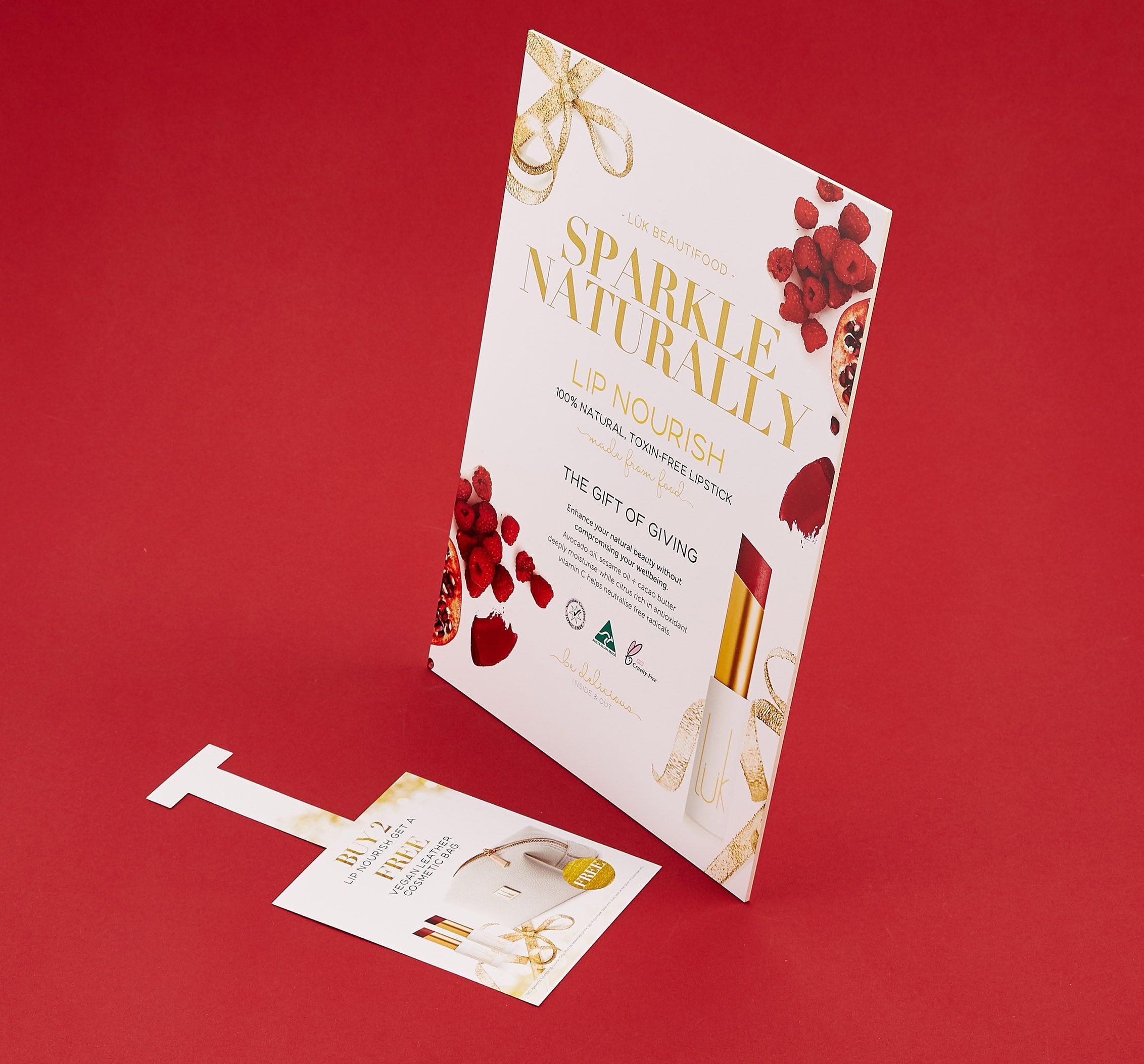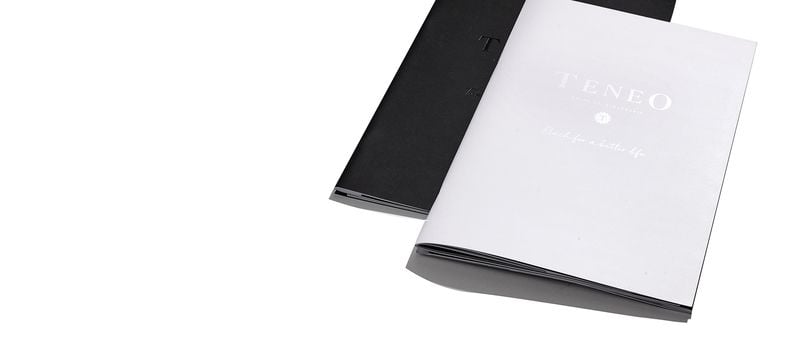The Smart Packaging Revolution
)
Whether it's reducing waste, attracting new customers or fighting fraud, embedded smart technology is quickly becoming the next big thing in packaging.
For the vast majority of the packaging industry, the use of smart technology in the supply chain is nothing new. After decades of the bar code and later, the QR Code, RFID tags and electronic chips are used throughout the industry to track products as they move from manufacturer to retail outlet. But their use beyond the supply chain has been limited to scannable codes that give access to product information and one-off marketing campaigns.But with the development of new and more cost-effective technology, those codes and campaigns are about to become a lot more available and useful to both customer and producer, improving both the value and the sustainability of packaging.
$52bn and counting
In the past few years, the area of smart packaging has become a multi-billion dollar industry. According to a report by Accuray Research, the global smart packaging market is set to grow by 5.4% over the next decade to reach $52bn by 2025.
A significant portion of that value will be in food traceability, which is expected to be worth more than $18.5bn by 2023 (Allied Market Research, 2017), driven by the concern people have about where their food comes from. Using electronic chips embedded within the packaging, customers can use their smartphones to trace exactly which farm their food was grown on, as well as how far it's travelled and how long it's been stored for.Such technology is also useful for food producers concerned about their products being copied and sold as counterfeits. In the extra virgin olive oil market, as much as 70% of the product sold is thought to be fake, a group of extra virgin olive oil producers asked Norwegian firm Thin-film to develop an NFC (near-field communication) chip that could be used within the packaging of their premium products. Customers could then use their phones to connect with this chip to ensure they had the genuine product.
Embedded information
As well as details on provenance, a number of firms are looking into embedding practical information into their packagings, such as operating instructions or recipe ideas. "There's absolutely no reason why you can't scan your ready meal and have that tell the microwave what setting to put it on," said Andy Hobsbawm, co-founder of smart products company EVRYTHNG.
Of course, once you start being able to embed information and content into packaging, then it's only a matter of time before the marketing departments start to advertise through this new communications channel, offering videos, competitions and ads for other products that pop up on your smartphone.Indeed, this is already happening. For evidence, see the McDonald's 'Track My Macca' campaign in Australia, which invited customers to scan their burger box with their phone to receive exclusive AR content.
Environmental impact
But perhaps the most useful application of smart packaging is in helping the environment. With smart technology able to detect whether certain foods are still safe to eat, it could extend the shelf life of a product, reducing food waste and providing greater efficiency in the supply chain.
Not only that, embedded information could provide the customer with detailed information about how the packaging can be recycled and even directions to the nearest recycling centre."Solutions are now being implemented to help combat waste and prevent food waste," said Eef de Ferrante, Director of the World Congress on Active & Intelligent Packaging. "The environmental issues we face can be solved by advancements in technology and implementation in the packaging industry. I strongly believe active and intelligent packaging will make great changes to these issues."
Smart packaging in action
Smart Vial Kit - Schreiner MediPharm
The international medical labelling and packaging company based in Germany has created a cardboard medicine box that tracks and monitors the medication it holds, providing a patient or doctor with information on which medication was removed from which compartment. The packaging contains an integrated electronic circuit that connects to a smartphone using NFC technology, and can even provide information on the temperature inside the packaging.
THE BOX - LivingPackets
Swiss startup LivingPackets has launched a sustainable and trackable shipping box that, according to the makers, generates almost zero packaging waste. Simply called 'THE BOX', it features real-time environmental monitoring (location, temperature, humidity, shocks, opening), as well as an integrated camera for remote viewing of the contents. THE BOX targets the booming e-commerce sector and allows customers to either pay for or return an item simply by pressing a button on the packaging.
Meray Muesli display - Fresh Nuts Gmbh
Display packaging is ideal for smart connectivity, allowing brands to provide customers with in-store content and communication to draw them towards the product and encourage purchase. To launch their new range of mueslis, German food brand Fresh Nuts used a display that featured images with digital watermarks, which can be read using a free app on a smartphone. By pointing their phones at the display images, customers can access video content, encouraging them to try the new breakfast cereal.
This article first appeared on twosides.org.au
| Posted in:Industry News |
Making the Most of EOFY
)
With the end of the financial year fast approaching, as a small to medium business owner the countdown is on. It can be a busy time of the year for accounting and bookkeeping on top of the planning for the new financial year to come.
We know how stressful the EOFY can be so we've put together a list of easy ways to invest the rest of your budget into products that will set you apart from your competition and set your business up for success in the new financial year.
Business Stationery
One of the most common sense purchases for your EOFY spending is business stationery. Stocking up on letterheads, business cards, With Compliments Slips, envelopes, note pads, swing tags and pens are a great way to make sure your business is always putting its best foot forward with a strong suite of branded product to aid you in doing whatever your business does best. With Digitalpress' variable data printing your artwork can be quickly changed and updated to make ordering and reordering business cards or a range of business stationery a cinch.
Annual Report
A common EOFY expense, but one not to be forgotten about. Who better to take care of your businesses annual report that the Beautiful Print Experts at Digitalpress. With our large range of stocks and finishes, we can put an extra special touch to your annual report, take care of your binding and have it delivered anywhere across Sydney CBD.
POS
The other side of EOFY is sales! Making sure your business has the correct signage for all your promotions for EOFY is an important way to communicate with customers and potential customers. Digitalpress can handle all of your POS signage from small on the counter signage all the way up to pull up banners and a-frame signs.

Rebrand
Perhaps its time to take the ultimate leap and rebrand your business to launch into the new financial year with a bang! If your business or brand has expanded over the past one or two financial years, your focus and values may have shifted and it is important that the brand direction follows that changing culture and supports your brand in all its new endeavors. Our in house graphic design team can manage your rebrand from start to finish or even just give your brand a refresh rather than a full rebrand.
Digitalpress are the Beautiful Print Experts. If you want your business to launch into the new financial year more successful than ever, call us today to book a consultation to find out how we can help your business grow.
3 Direct Mail Tactics
)
Re-engaging lapsed customers can have a lasting effect on your bottom line. Direct mail has proven itself to be an effective channel in this respect. By reaching out to customers who have stopped frequenting your business, you stand to convert a segment that is already familiar with your brandall with a simple, well-written mailpiece. Read on for three tactics to employ when sending a win-back direct mail campaign.
1. Ask Customers Why They Left and Include a Prepaid Business Reply Card
Send your lapsed customers a mailpiece with a short survey. Ask them directly why they stopped frequenting your business. Include a brief list of three to four questions. Be sure to design your mailpiece with a business reply card (BRC), and a prepaid and preaddressed postcard that makes it easy for customers to respond. Provide an incentive, like an exclusive offer, for completing the survey. As an added bonus, you can leverage this information to better identify and address customer issues in the future.
2. Show Them What They're Missing
Entice customers to return to your business by showing them your newest products and brand campaigns. Send a postcard or booklet that reflects your latest marketing initiatives. If possible, tailor your mail campaign to specific segments within your lapsed customer pool. With variable data printing (VDP) you can then customize the direct mail content to each segment.
3. Offer a Final Enticement to Win Them Back
Send your customers a mailpiece indicating that this will be your last offer. Up the ante by providing a high discount or a rare deal. Make the offer time-sensitive to drive them to act quickly. Be sure to use a warm voice to stress how much their business is important to you. Many companies use the following copy to accomplish their goal: We hope this isn't goodbye.
In Summary
As a channel, direct mail is well-suited for win-back campaigns. Grab a customer's attention with a personalized, physical mailpiece and draw them in with a new product line or one last attention-grabbing offer. With a few strategic design and messaging decisions, you can tailor your direct mail campaign to win-back lost customers.
This article first appeard on inkondapaper.com
Amazon Release Their First Ever Printed Catalogue
)
With the release of their first ever catalogue, Amazon have added print to their marketing mix. We take a look at the book and discover why the online retail giant has gone offline
In November last year, a toy catalogue was mailed out to millions of Americans. Given that it was the run-up to Christmas and toys are among the season's most popular gifts, there's nothing unusual in that. What was unusual was the retail brand behind the publication.
Titled 'A Holiday of Play', the 68-page catalogue was planned, created and mailed by Amazon the world's most valuable online retailer. On the face of it, for a company that's built its vast fortune in the digital arena to produce a print publication is one of the year's biggest surprises in marketing. Amazon thrives online, using a variety of digital platforms, sophisticated use of data, and a lack of bricks and mortar stores to keep its prices low and its profits high.But by producing the catalogue, Amazon has not only demonstrated that print is a valuable marketing tool, but shown how a print publication can fit neatly into a hugely successful multi-platform marketing campaign.
The catalogue of the future
If you're one of the lucky ones that have a copy of 'A Holiday of Play', you'll immediately notice a number of unique features. (If you don't, you can download a PDF version here.) Firstly, there are no prices in the catalogue. Readers are invited to scan the images in the pages using their smartphone and be taken direct to the corresponding page on Amazon.com. Featured toys also come with QR Codes (or 'Smilecodes') that can be scanned in the Amazon app.
Elsewhere, there's a Holiday Wishlist, where kids can write down the toys they want to see in their stockings on Christmas Day, as well as a page of stickers to really engage their target audience. What the publication aims to do is pique the interest of its readers, gaining their attention when they're in their own home and relaxed. It's taken them a while, but Amazon have realised what many other retail brands have known for years: print engages the reader and gains their full attention, increasing customer loyalty and, more importantly, sales.

The benefits of browsing
As well as being a permanent reminder of a brand in the home, catalogues are a proven way to drive sales. In fact, according to a Royal Mail MarketReach report, 52% of people bought more than they planned when shopping with a printed catalogue. They are also a convenient way to show customers a range of products, as well as giving them important details about those products. In the same report, 63% of people say it's easier to browse through products in a catalogue, rather than in-store or online.With the online and social media arenas becoming increasingly cluttered, catalogues are emerging as a solid bet for companies keen to reach their customers in an environment free of distraction. And Amazon isn't the only online giant that understands their sales power global auction site eBay also mailed out millions of copies of its print catalogue around the same time, showcasing the wide variety of rare and retro toys it has on its website to millions of customers.
Sign of success
The fact that multi-billion dollar companies such as Amazon and eBay are turning to physical catalogues to advertise their products is very big news in the world of print marketing. After all, companies as big as these don't make key marketing decisions unless there are a series of very large benefits. It's a clear sign that catalogues work, not only as a standalone engagement and sales tool, but as a proven driver to digital platforms.
The festive season may be over, but for catalogues, Christmas could be just around the corner.
This article was originally posted on twosides.org.au
| Posted in:Industry News |

)
